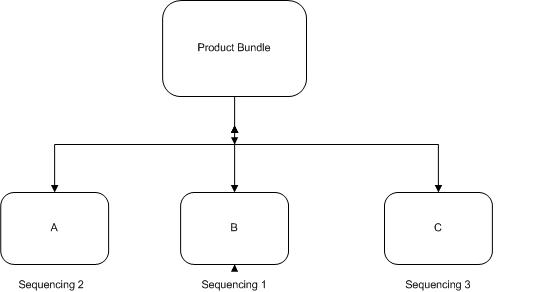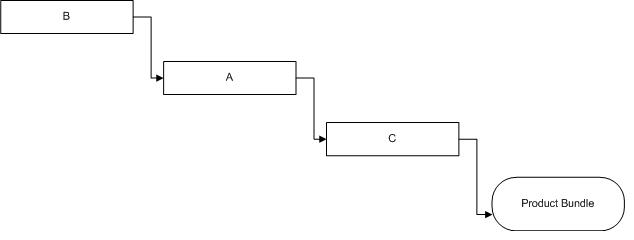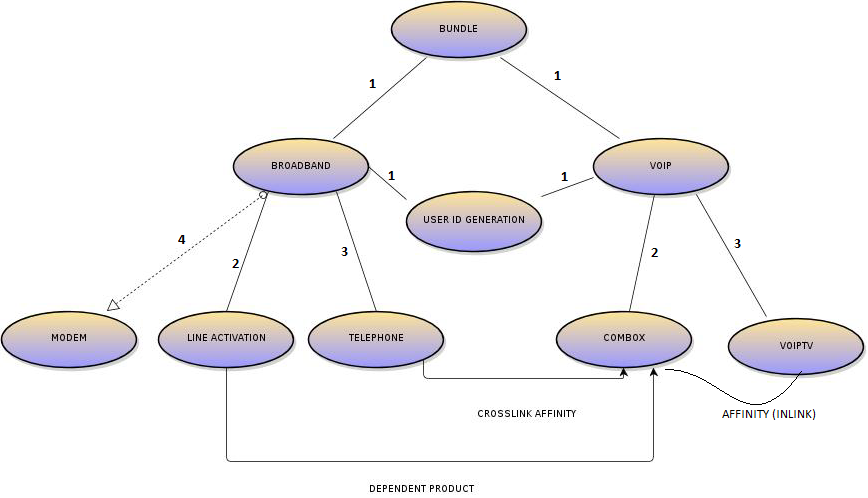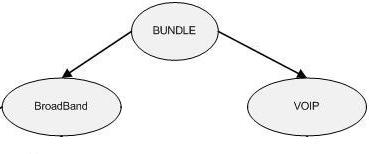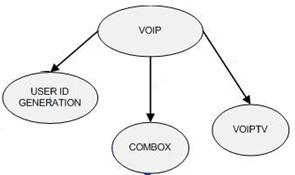Sequencing
The product catalog defines the sequencing requirements between the fulfillment steps for products in a product offering.
When the order plan is being developed, the information in the product catalog is used such that the instance sequence defined for each sub-product and products, which contain these sub-products translates to a dependencies between Plan Fragments associated with each product/sub-product and the fulfillment happens in the correct sequence.
Sequencing is governed by certain rules on the Plan Fragments.
Order Management supports the action-based sequencing. This use case based sequence of back-end systems are utilized in the decomposition to ensure back-end (process component) are called in the correct order. Based on the order line action, the following types of sequencing are used:
PROVIDE Sequencing: This scenario occurs when the order line action is PROVIDE and all the sub-products use the provide instance sequence number.
CEASE Sequencing: This scenario occurs when the order line action is CEASE and all the sub-products use the cease instance sequence number.
UPDATE Sequencing: This scenario occurs when the order line action is UPDATE and all the sub-products use the update instance sequence number.
The following figure shows the sequencing for the products A, B, and C.
For example, a bundle is comprised of Product A, Product B, and Product C, with PROVIDE sequencing set to 2, 1 and 3 respectively. When an order plan is developed, Product B is executed first, followed by Product A and then Product C.
Similarly, a CEASE sequencing order can also be defined for the same Product Bundle with a sequencing of 3, 1, and 2 for products A, B, and C respectively. In this manner, the order might be fulfilled in the correct sequence taking into account what action needs to be performed.
The Order lines are converted into plan items during the plan development by using the information in the product catalog. The diagram explains the sample product model and its components (product offerings). This diagram is used to briefly explain the different Plan Development Concepts (for details, see Automated Order Plan Development).
The table describes the diagram elements of the Product Model Hierarchy.
Product Model Description:
The product BUNDLE is comprised of the two product offerings:
The Broadband product offering contains the products as the Telephone, UserID, and Line Activation as the mandatory product. Modem is an optional product.
VOIP has the COMBOX, UserID, and VOIPTV as part of its technical products.
The product UserID, here has two parents - Broadband and VOIP. The product UserID has single use record attribute set to true with both its parents.
Using (relationship) sequencing, all the child products of the BUNDLE would be fulfilled or processed in parallel, and all must complete before the entire BUNDLE can be fulfilled. Often, additional sequencing is required within elements at the same hierarchy level in the model. This can be accomplished by providing sequence numbers on the ProductComprisedOf relationship.
Product Model Description with the Sequencing Feature:
The correct fulfillment sequencing of the product plan execution as per the diagram is:
- The UserID is created.
- The order on the Telephone and COMBOX is processed. The Telephone and COMBOX are installed.
- The Line Activation is completed.
- Modem is installed.
- VOIPTV is installed.
- Broadband Product Order and VOIP Order is completed.
- The entire BUNDLE order (Broadband and VOIP) is completed.
Taking the product as an example, the table shows the sequencing of the products:

